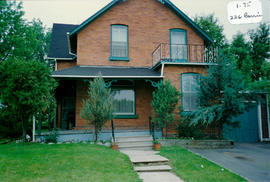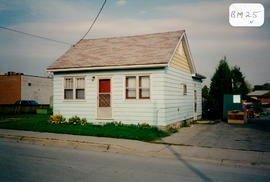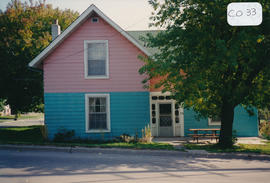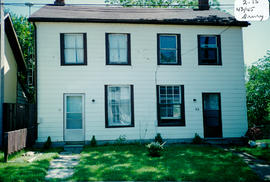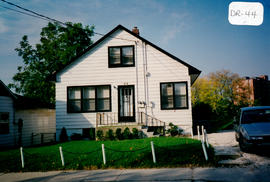- CA BWGPL GJ-HB-2017-03-15-11
- Item
- 1996
Part of George Jackson fonds
The house located mid-block on the west side at 226 Barrie St. was built around 1880 in the Gothic Revival style. It is a 1½-storey, ‘L’-shaped building has large window openings with high floor to ceiling heights. The house has a medium-pitched, gable roof, an asymmetrical plan, and a wrap-around porch. Original 2/2 wood, sash windows with wood lug sills have modern aluminum storm windows. The large, ground-floor window is a replacement. There is elaborately-carved bargeboard trim at the front gable and brackets at the porch. The house has load-bearing, brick masonry construction and a stone foundation. According to the 2000 inventory, the balcony handrail, replacement doors and windows, and the garage addition are unsympathetic with the original design. (1, 3)
George Jackson

